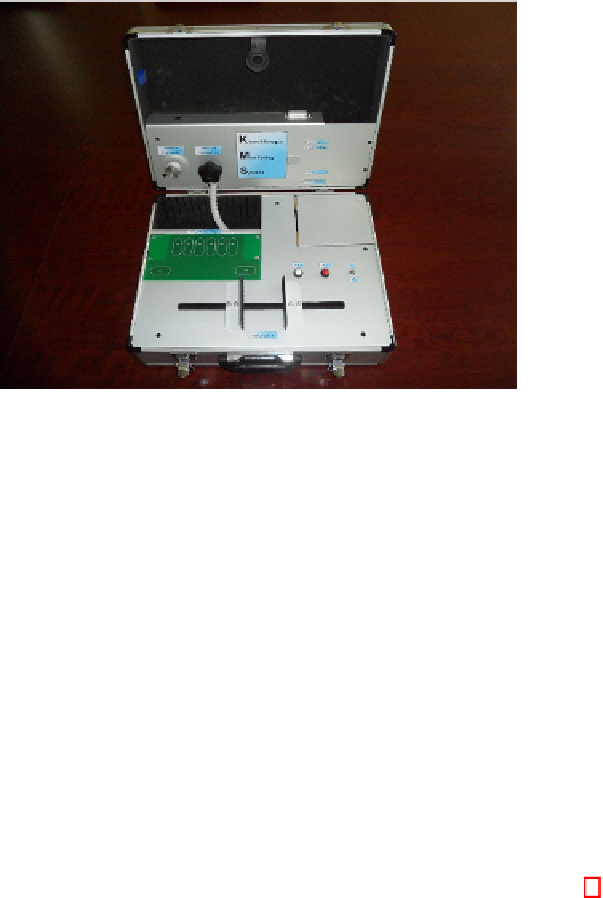Biomedical Engineering Reference
In-Depth Information
Fig. 1.
The prototypical device for the real-time hand functionality assessment
On the vertical panel there are two knobs. The outer one allows the evaluation of the
patient manipulation dexterity (exercise of
dynamic rotation
). The patient must rotate
as fast as possible the knob using his fingers, shaped in a pinch grasp, without any wrist
rotation and maintaining the forearm on the horizontal plane. The adjacent knob allows
to evaluate the clockwise and anticlockwise rotation torque (
isometric rotation
exercise)
with the same grasp type and restrictions of the previous exercise.
On the horizontal panel of the device it is possible to perform the other two exercises.
One is a revised version of the
finger tapping
exercise, which must be performed on the
exposed printed circuit board (PCB). The patient must touch key-shaped pads on the
PCB following a specific sequence (little finger, ring finger, middle finger, first finger
and thumb) as playing the piano. It is allowed to have multiple fingers on the keys
provided that the sequence is correctly performed and closed with a thumb tapping.
The last exercise allows evaluating the
hand extension
ability. The patient must rest
the hand between the two L-shaped aluminium profiles, touching them with the thumb
and the little finger. Then he must open and close the hand (always on the horizontal
plane) in rhythm, allowing the aid to appreciate opening and closing agility. A constant
counter-resistance is applied.
The correct position of the patient's hand for the 4 exercises is depicted in Fig. 2.
3.1
Hardware Architecture
From an hardware perspective, the device leverages a mother board hosting the main
MSP430FG4618 microcontroller unit (MCU) @1MHz, the analog front-end for the
sensorized aids, all the power supply circuitry and the visible/audible feedback devices.
The analog and digital sensorized aids are tightly connected to the device whereas the
Bluetooth module for the PC connection is detachable being connected to the device by
a 25-pole female D connector, guaranteeing also access to the JTAG ports to program
the 2 MCUs embedded in the device. A single power supply at 3.3V is available on
board, obtained from a single-cell rechargeable Li-ion battery.

Search WWH ::

Custom Search